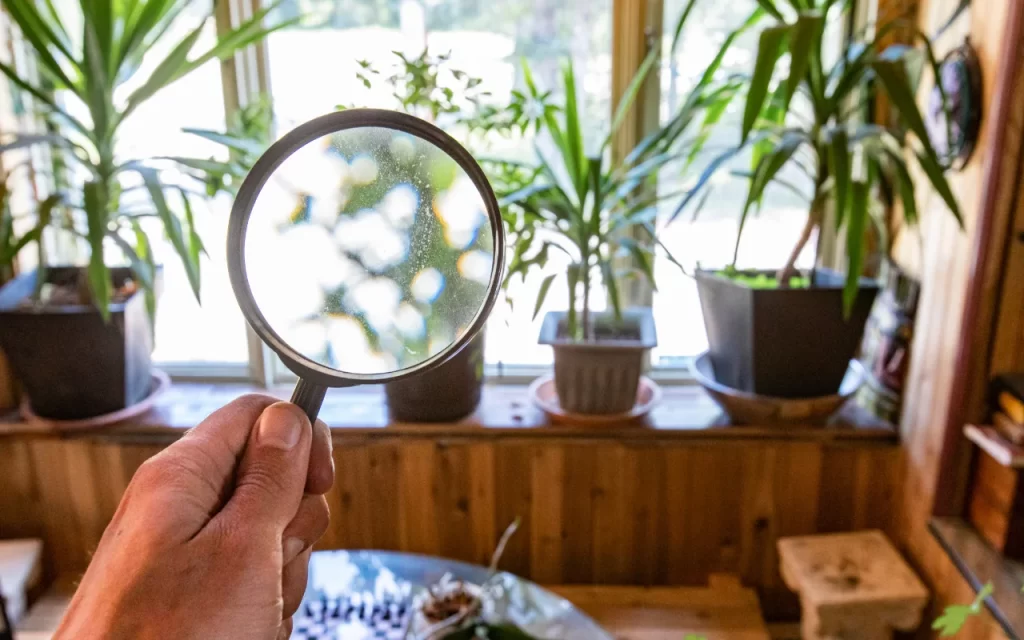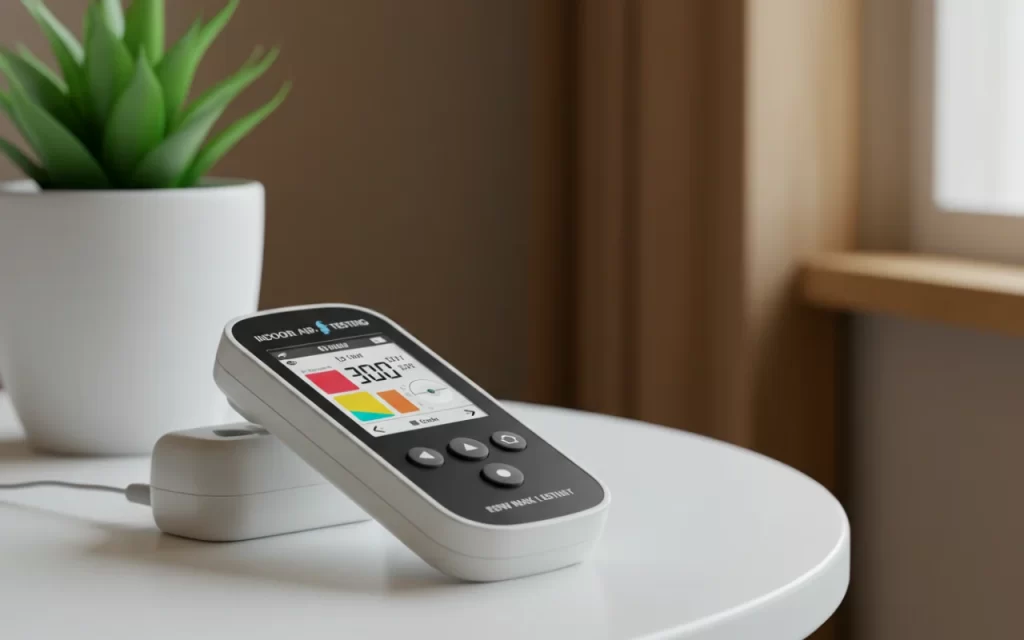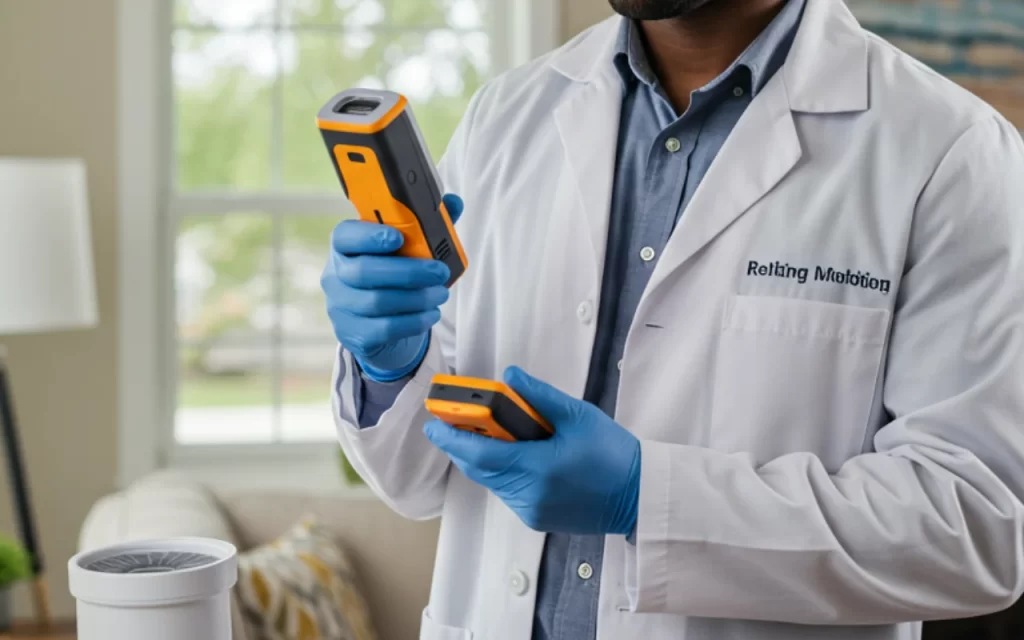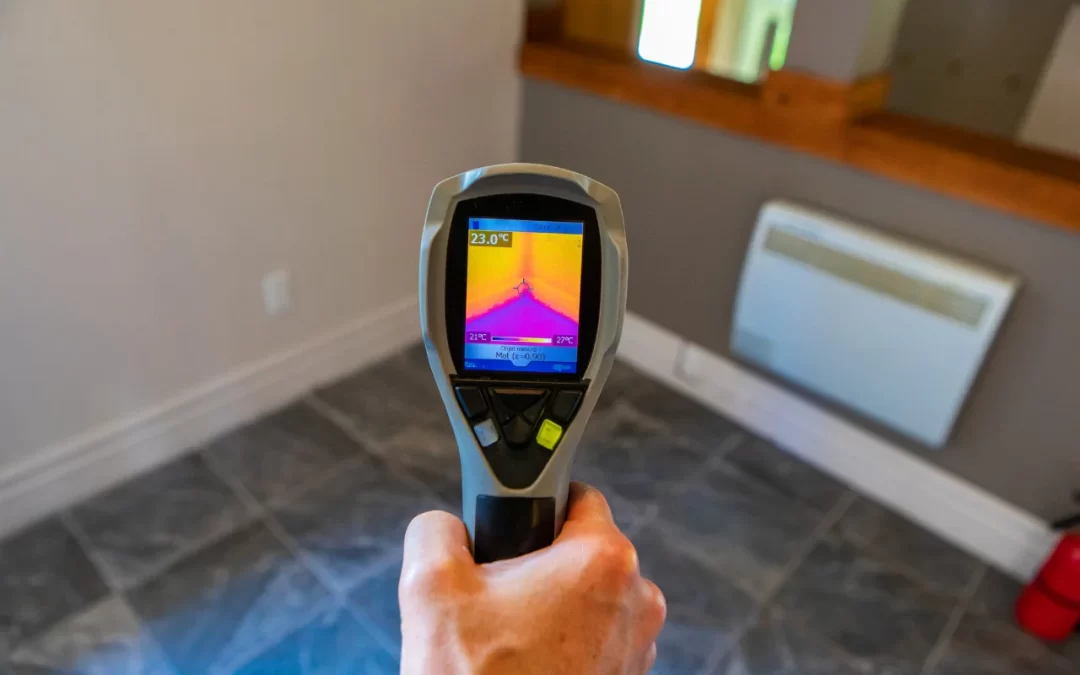Indoor air quality (IAQ) is one of the most important yet overlooked aspects of a healthy home or workspace. Many people are unaware that the air inside their home can be more polluted than the air outside, which can lead to long-term health concerns, especially for individuals with respiratory conditions, allergies, or weakened immune systems.
In this guide, we’ll walk you through how to check indoor air quality, why it’s essential, the tools you can use, and what signs to watch out for. By the end, you’ll be equipped with the knowledge needed to take control of your indoor environment.
Why Indoor Air Quality Matters

The quality of the air inside your home can affect your physical health, comfort, concentration, and overall well-being. Pollutants like dust, pet dander, mould spores, volatile organic compounds (VOCs), carbon monoxide, and even asbestos can accumulate in indoor spaces, particularly if ventilation is poor.
Poor indoor air quality has been linked to:
- Respiratory issues such as asthma and bronchitis
- Allergies and skin irritation
- Fatigue and headaches
- Long-term illnesses caused by exposure to toxic materials like asbestos or mould
Children, the elderly, and those with pre-existing medical conditions are particularly vulnerable to poor air quality, making it essential for families and businesses alike to monitor and improve their indoor air.
Common Indoor Air Pollutants

Understanding what you’re looking for is a critical first step. Here are some of the most common indoor air pollutants:
1. Mould and Mildew
Mould spores thrive in damp, poorly ventilated areas and can trigger allergies, respiratory problems, and even more severe conditions with long-term exposure. If you’ve ever wondered how to detect mould in your home, you’re not alone. Many signs are invisible to the naked eye, and air testing can help uncover them.
2. Volatile Organic Compounds (VOCs)
These chemicals are emitted as gases from everyday household products such as paints, cleaning agents, and adhesives. Long-term exposure to VOCs can cause nausea, dizziness, and even liver or kidney damage.
3. Carbon Monoxide (CO)
A silent killer, carbon monoxide is a colourless, odourless gas produced by burning fuel. If not detected, it can lead to carbon monoxide poisoning, which is fatal in high concentrations.
4. Asbestos Fibres
Used in older buildings, asbestos can be extremely hazardous when disturbed. If you live in a house built before the 1990s, you may want to consider asbestos sample testing to ensure your safety.
Signs of Poor Indoor Air Quality
Not all indoor air issues are visible. Here are some red flags to watch for:
- Persistent musty or chemical smells
- Frequent respiratory infections or allergic reactions
- Condensation on windows or damp patches on walls
- Increased dust accumulation
- Discolouration or peeling on walls or ceilings
If you notice any of these signs, it’s a good indication that your indoor air may be compromised.
How to Check Indoor Air Quality
Now that you know what to look for, here are some ways to actually check your indoor air quality:
1. Use an Indoor Air Quality Monitor
One of the easiest and most accessible ways to monitor your home’s air is by purchasing a digital IAQ monitor. These devices track things like humidity, temperature, VOC levels, and carbon dioxide. Some advanced models even detect carbon monoxide and particulate matter (PM2.5).
2. Hire a Professional Indoor Air Quality Service
While DIY tools can be helpful, they often don’t capture the full picture. Professionals use industrial-grade equipment and scientific methods to identify and analyze a wide range of air pollutants. If you want a thorough evaluation, it’s best to book Indoor Air Quality Testing Services from a reputable provider.
3. Conduct Mould and Moisture Testing
Moisture meters and infrared cameras can identify hidden leaks or moisture pockets behind walls — often the breeding grounds for mould. This is especially useful if you suspect mould but don’t see it visually.
4. Test for Carbon Monoxide and Radon
Install carbon monoxide detectors near sleeping areas and furnaces. Radon test kits are also available and are crucial if you live in a region where radon exposure is a concern.
5. Check HVAC and Ventilation Systems
Your heating, ventilation, and air conditioning systems (HVAC) play a critical role in circulating and filtering air. Dirty or clogged filters, leaking ducts, or poor design can lead to stale or contaminated indoor air. Inspect and clean your systems regularly.
Steps to Improve Indoor Air Quality
Testing is the first step. Once you’ve identified pollutants, you can take action:
1. Increase Ventilation
Open windows regularly, especially when cooking or using cleaning products. Use exhaust fans in bathrooms and kitchens to reduce moisture and odours.
2. Use Air Purifiers
High-efficiency particulate air (HEPA) filters can capture most airborne particles, including dust, allergens, and some bacteria. Choose a purifier suited for your room size for maximum efficiency.
3. Control Humidity
Maintaining indoor humidity between 30–50% helps prevent mould and dust mites. Use dehumidifiers in damp areas and fix any leaks promptly.
4. Clean Regularly
Dust and vacuum your home weekly, using a vacuum with a HEPA filter. Clean bedding, upholstery, and curtains frequently, as they can trap allergens and dust.
5. Choose Low-VOC Products
When buying paint, furniture, or cleaning products, look for those labeled low-VOC or VOC-free. These emit fewer harmful chemicals into the air.
Why Professional Testing Is Worth It

While DIY approaches are a great start, professional indoor air quality assessments are far more comprehensive. At EnviroHealth, we specialise in identifying air quality issues in homes, schools, and workplaces using advanced diagnostic tools and laboratory analysis. Whether you’re dealing with strange odours, recurring health symptoms, or just want peace of mind, we can help you breathe easier.
Our team also provides related services like asbestos sample testing and mould inspection to give you a full picture of your indoor environment. With years of experience and a commitment to public health, we offer reliable and science-backed solutions tailored to your needs.
Take Control of Your Indoor Air Today
Indoor air quality plays a significant role in your health, comfort, and safety. Regular monitoring, combined with proper ventilation, cleaning, and the use of low-emission products, can significantly reduce indoor pollutants.
For those who want a comprehensive analysis, consider professional Indoor Air Quality Testing Services. If you suspect specific issues such as mould or asbestos, don’t hesitate to schedule asbestos sample testing or learn how to detect mould in your home for a complete health check on your living space.
Clean air isn’t a luxury — it’s a necessity. Make it a priority in your home or workplace and invest in a healthier future for you and your loved ones.

